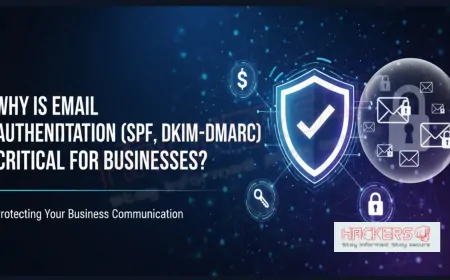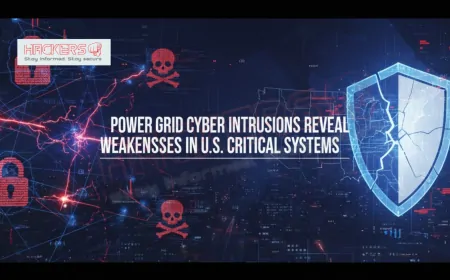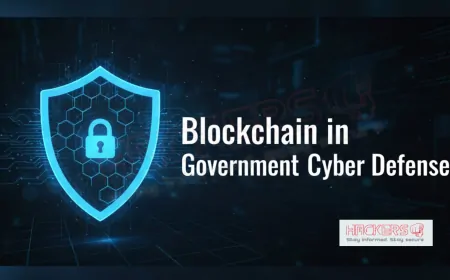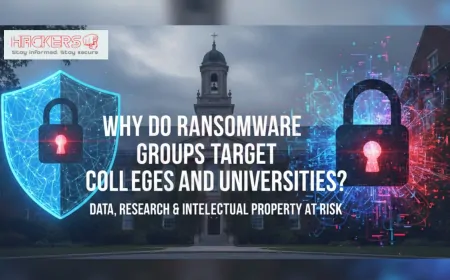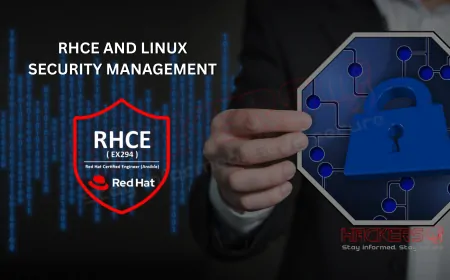How Can Students Build a Strong Cybersecurity Portfolio in College?
Imagine landing your dream job in cybersecurity right after college. The interviewer asks, "What makes you stand out?" You confidently pull up your portfolio, showcasing projects that demonstrate your skills in spotting vulnerabilities and protecting data. That moment feels empowering, does it not? As a college student diving into the world of cybersecurity, building a strong portfolio is your ticket to turning passion into a career. It's not just about grades or textbooks. It's about proving you can apply what you learn to real challenges. In this blog, we explore practical steps to create a portfolio that catches eyes. Whether you are a beginner or have some experience, these tips will guide you. Cybersecurity is a field that grows daily, with threats evolving and opportunities expanding. Starting in college gives you an edge. You have time, resources, and access to mentors. Let's dive in and build something impressive together.

Table of Contents
- Why Build a Cybersecurity Portfolio in College?
- Start with the Fundamentals
- Hands-On Projects to Showcase Skills
- Sample Projects Table
- Earn Relevant Certifications
- Pursue Internships and Real-World Experience
- Network and Join Communities
- How to Showcase Your Portfolio
- Seek Guidance from Mentors
- Conclusion
- Frequently Asked Questions
Why Build a Cybersecurity Portfolio in College?
Cybersecurity is more than a buzzword. It is a critical field protecting everything from personal data to national infrastructure. Employers seek candidates who can think like attackers and defenders. A portfolio shows you do more than pass exams. It highlights your initiative and problem-solving.
College is the perfect time to start. You face fewer pressures than working professionals. Use club meetings, late-night study sessions, and summer breaks wisely. A strong portfolio can lead to internships, scholarships, or early job offers. Think of it as your resume's best friend. It tells a story of growth and dedication.
Consider this: In a 2024 survey by a leading tech association, over 70% of hiring managers said portfolios influenced their decisions more than GPAs. Why wait until graduation? Begin now, and watch opportunities unfold.
Start with the Fundamentals
Before jumping into advanced projects, solidify your basics. Cybersecurity builds on layers, like an onion. Peel back each one to understand the core.
First, grasp networking essentials. Learn how data travels across devices. Terms like IP addresses and firewalls might sound intimidating, but they are straightforward once explained. An IP address is like a home's mailing address for computers. Firewalls act as security guards, checking incoming and outgoing traffic.
Next, explore operating systems. Focus on Linux and Windows, as they power most systems. Practice commands in a terminal. It feels clunky at first, but soon it becomes second nature.
Do not forget programming. Python is a gentle entry point. It is readable, like English, and versatile for scripting security tools. Start with free resources like Codecademy or your university's intro courses.
- Enroll in foundational courses offered by your department.
- Join study groups to discuss concepts.
- Read beginner books, such as "Hacking: The Art of Exploitation," but take it slow.
Building fundamentals takes time, roughly 3-6 months of consistent effort. Track your progress in a journal. This habit will later feed into your portfolio narrative.
Hands-On Projects to Showcase Skills
The heart of your portfolio beats in projects. They prove you can apply theory. Aim for 4-6 diverse ones, covering offense, defense, and analysis.
Start simple: Set up a home lab. Use virtual machines with free software like VirtualBox. Simulate networks to test vulnerabilities. Document every step, from setup to findings. Screenshots and code snippets make it visual.
For offense, try ethical hacking challenges. Platforms like Hack The Box offer beginner rooms. Capture flags, which are hidden clues, to win. Explain your approach: reconnaissance, scanning, exploitation. This shows methodical thinking.
Defense projects shine too. Build a secure web app using tools like OWASP guidelines. OWASP stands for Open Web Application Security Project, a community resource for best practices. Test it against common attacks, like SQL injection, where malicious code tricks databases.
Analysis is key. Create a threat model for a fictional company. Identify risks, prioritize them, and propose mitigations. Use free tools like Microsoft Threat Modeling Tool.
- Choose projects aligning with your interests, such as IoT security if gadgets excite you.
- Collaborate with peers for team-based entries.
- Update projects quarterly to reflect new learnings.
Each project should solve a problem. Write a short blog post on your site explaining it. This doubles as content for your portfolio.
Sample Projects Table
To get you inspired, here is a table of sample projects. Each includes difficulty level, tools needed, and estimated time. Pick one and adapt it.
| Project Name | Difficulty | Tools Needed | Estimated Time | Description |
|---|---|---|---|---|
| Home Lab Setup | Beginner | VirtualBox, Kali Linux | 1 Week | Create a virtual network to practice basic scanning. |
| Vulnerability Scanner | Intermediate | Python, Nmap | 2 Weeks | Build a script to detect open ports on devices. |
| Secure Chat App | Intermediate | Node.js, Encryption Libraries | 3 Weeks | Develop an app with end-to-end encryption. |
| Incident Response Plan | Advanced | Wireshark, Documentation Tools | 1 Month | Simulate a breach and outline response steps. |
| Password Cracker Demo | Beginner | Hashcat, Ethical Guidelines | 1 Week | Demonstrate weak password risks ethically. |
Earn Relevant Certifications
Certifications add credibility. They are like badges proving your knowledge. For college students, focus on entry-level ones to avoid overwhelm.
CompTIA Security+ is a solid start. It covers basics like threats and compliance. Study 2-3 months, using free YouTube channels or official guides. Cost around $350, but check for student discounts.
Next, Google Cybersecurity Certificate on Coursera. It is affordable, under $50 monthly, and job-ready. Modules include Python for security and incident response.
For hands-on, try Certified Ethical Hacker (CEH). It teaches penetration testing. Expensive at $1,200, but scholarships exist through organizations like ISC2.
- Schedule exams during breaks to focus.
- Join study buddies for motivation.
- List certs prominently in your portfolio with verification links.
By graduation, aim for 2-3 certs. They signal commitment to employers.
Pursue Internships and Real-World Experience
Projects are great, but nothing beats real work. Internships bridge classroom to career.
Start local: Approach university IT departments or small firms. Offer to assist with audits. Even unpaid gigs build experience.
Use platforms like LinkedIn or Indeed. Tailor resumes to highlight projects. "I built a vulnerability scanner detecting 95% of common flaws" grabs attention.
Summer programs shine. NSA's CyberCorps or Cisco's initiatives target students. They pay stipends and offer mentorship.
- Apply early, 6 months ahead.
- Prepare for interviews with mock scenarios.
- Reflect on experiences in portfolio case studies.
One internship can transform your portfolio. It shows you thrive under pressure.
Network and Join Communities
Cybersecurity thrives on connections. Events and groups open doors.
Join campus clubs like Cybersecurity Society. Host hackathons or guest talks. It is fun and resume-boosting.
Attend conferences: Black Hat or DEF CON for inspiration, though pricey. Virtual options like BSides are free.
Online, engage on Reddit's r/netsec or Discord servers. Share project updates. Ask questions; give answers too.
- Follow influencers on LinkedIn for tips.
- Volunteer at events for free entry.
- Build a contact list, follow up politely.
Networking feels awkward initially. Push through; genuine interest shines.
How to Showcase Your Portfolio
Your portfolio needs a home. A personal website works best. Use GitHub Pages for free hosting. It integrates code repos seamlessly.
Structure it simply: Home page with bio, Projects section with details, Certifications list, Blog for writings, Contact form.
Design clean: White space, readable fonts, mobile-friendly. Tools like Bootstrap help beginners.
Include metrics: "My scanner reduced false positives by 40%." Visuals like diagrams engage viewers.
- Test usability with friends.
- Optimize for SEO with keywords like "student cybersecurity projects."
- Update monthly to stay fresh.
A polished site turns browsers into believers.
Seek Guidance from Mentors
Mentors accelerate growth. In college, tap department resources.
At Tech University, Dr. Alice Johnson, Head of Department (HOD) for Cybersecurity, leads with 20 years in the field. She authored "Defending Digital Frontiers" and mentors students on research. Schedule office hours; her insights on emerging threats are gold.
Renowned faculties include Prof. Bob Smith, expert in ethical hacking. He developed open-source tools used by agencies and teaches penetration testing. Students rave about his workshops.
Prof. Carla Lee specializes in cryptography. With publications in top journals, she guides encryption projects. Her simple explanations demystify complex math.
Reach out: Email with specific questions. "I am building a secure app; any advice on key management?" Join their labs for collaborative opportunities.
- Respect their time; come prepared.
- Follow up with thank-yous.
- Mention mentorship in your portfolio for authenticity.
Mentors invest in you. Their endorsement carries weight.
Conclusion
Building a cybersecurity portfolio in college is a journey of discovery and dedication. From fundamentals to flashy projects, each step strengthens your profile. Remember, consistency trumps perfection. Start small, iterate often, and seek help along the way.
By graduation, you will have a collection showcasing your unique path. It is not just about jobs; it is about contributing to a safer digital world. Take that first project today. Your future self will thank you. Stay curious, stay secure.
Frequently Asked Questions
What is a cybersecurity portfolio exactly?
A cybersecurity portfolio is a collection of your work samples, like projects, certifications, and writings, that demonstrates your skills to potential employers or collaborators. It acts as a visual resume tailored to the field.
Do I need coding skills to start?
No, you do not need advanced coding right away. Begin with basics in Python or Bash through free tutorials. Many projects use no-code tools initially.
How long does it take to build a basic portfolio?
A basic one takes 1-2 months with 5-10 hours weekly. Focus on 2-3 projects and one certification for starters.
Are free resources enough?
Yes, platforms like Coursera, edX, and TryHackMe offer excellent free content. Supplement with library books for depth.
What if I am not in a tech major?
Major does not matter. Many enter cybersecurity from business or liberal arts. Highlight transferable skills like analysis.
How do I choose projects?
Pick ones matching job interests, like network security for IT roles. Ensure they are ethical and documented well.
Can group projects count?
Absolutely. Note your contributions clearly, such as "Led scanning phase in team audit."
What certifications for beginners?
CompTIA Security+ or Google Cybersecurity Professional Certificate. Both are accessible and recognized.
How to find internships?
Use Handshake, LinkedIn, and university career centers. Apply broadly and customize applications.
Is GitHub necessary?
It is highly recommended for hosting code. Create a repo per project with README files explaining usage.
How often to update the portfolio?
Every 1-3 months, or after new achievements. Keep it current to show ongoing learning.
What tools for beginners?
Start with Nmap for scanning, Wireshark for traffic analysis, and Burp Suite Community Edition for web testing.
Should I include failures?
Yes, briefly. Discuss what you learned from a failed exploit attempt; it shows resilience.
How to make it stand out?
Add visuals, metrics, and personal stories. Tailor sections for specific applications.
Free website builders?
GitHub Pages, WordPress.com, or Wix free tiers work well. Focus on clean, professional design.
Networking tips for introverts?
Start online via forums. Attend small meetups. Prepare 2-3 questions to ease conversations.
Budget for certifications?
Many under $100 with student aid. Look for vouchers from professors or clubs.
Legal aspects of projects?
Always use legal targets like your own labs or authorized platforms. Never test without permission.
Mentorship from faculty?
Yes, email politely with specifics. Many, like our HOD Dr. Johnson, love guiding students.
Measuring success?
Track interview callbacks, feedback, or project completions. Adjust based on what works.
What's Your Reaction?







